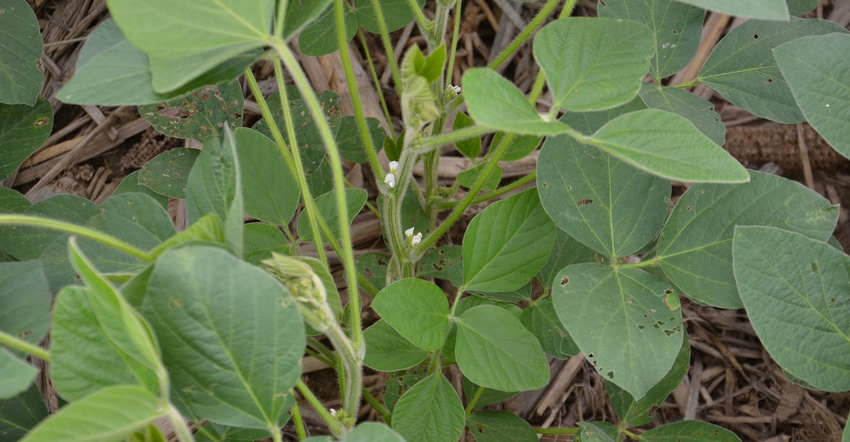
What color are soybean flowers? Does it matter? Be careful. Someone could argue they’re trick questions.
First, what color are soybean flowers? The answer is they can be various colors, ranging from white to purple. Flower color is a genetic trait that is inherent in the variety, Steve Gauck notes.
“Different varieties may have a different color of flower,” says Gauck, regional agronomy manager for Beck’s, based near Greensburg, Ind. “What you can count on is that the same variety will always have the same color of flower. It’s a genetic characteristic like many others, which distinguish one variety from another.”
Beck’s sponsors Soybean Watch ’20. Look for reports each week on the web and monthly in print related to observations on a soybean field in central Indiana. Gauck hopes his observations and comments based on that field will provide insights for you as you manage your own soybeans.
Tell varieties apart
Second, does it matter? Flower color doesn’t affect yield, Gauck says. It’s more of an identification type of genetic characteristic. The same applies to pod color when soybeans are mature. Some varieties have a tawny color, some are brown, some tan and some have lighter- or darker-colored pods than others. What affects yield is what’s inside the pods.
"It’s still worth noting characteristics like flower color during the earlier part of the season and pod color at harvest,” Gauck explains. “It can help you identify one variety from another, if there’s more than one planted in the field and you’re scouting during the season.”
That was the case in the Soybean Watch ’20 field this year. There are multiple varieties in the field. The grower planted the no-till soybeans into heavy corn residue June 5 with a 24-row, split-row planter on 15-inch rows. With the first two varieties, he planted one variety with half the planter and the second variety with the other half, making 24-row blocks across the field.
Although it was difficult to note any difference early, by mid-July, just before canopy closure, with soybeans flowering in the R1 stage, there appeared to be a difference in shade of green from one set of 24 rows to the next across the field. Soybeans were about the same height, but one block seemed a bit darker green than the other block.
Checking flower color confirmed that they weren’t the same variety. In this case, one variety produced white flowers, and one produced purple flowers.
“Flower color was obvious, and confirmed they were different varieties,” Gauck says. “Once you knew that, you could be more certain that the variation in shades of green you were seeing across the field was likely linked to differences in varieties too.”
Does it matter that one is darker green than the other variety? Not necessarily, Gauck says. It could just be another characteristic peculiar to the variety, which doesn’t affect final yield.
“It’s still good to note different characteristics of varieties and record them for future reference,” he says. “Some varieties might flower or move into the next growth phase a couple of days sooner than another variety. It’s another characteristic worth watching while scouting.”
About the Author(s)
You May Also Like




